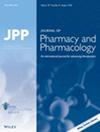亚洲的毛茛属:植物学、传统用途、植物化学、药理学、毒性和药物制剂综述
IF 2.8
4区 医学
Q2 PHARMACOLOGY & PHARMACY
引用次数: 0
摘要
目的 毛茛属(Ranunculus L.)包含 413 个种,是毛茛科(Ranunculaceae Juss.)中最大的属。本综述旨在介绍毛茛属植物的植物学特征、传统用途、植物化学、药理学、毒性和药物制剂。主要发现 小牡丹属植物含有黄酮类、有机酸、香豆素、内酯、苷、甾醇、多糖和微量元素。这些化学成分与药理作用相辅相成,共同发挥抗炎、抗癌、抗结核、抗菌、抗疟等作用。清热解毒等传统中药特性使其在民族医药中具有重要地位。随着研究的进展和各种药物制剂的开发,使其出现在流行病学和临床研究中。小结 毛茛属植物以其独特的优势吸引了众多领域专家学者的关注。然而,还有许多物种没有得到科学研究。毒性问题也是一个巨大的隐患。幸运的是,通过干燥或加热等特殊工艺以及选择安全的提取溶剂(如水),可以克服毒性问题,从而确保用药安全。含有毛茛科植物的药物制剂具有可喜的临床价值,但推广力度不够。因此,应开展进一步的研究,推广毛茛属植物对人类健康的益处。本文章由计算机程序翻译,如有差异,请以英文原文为准。
The genus Ranunculus L. (Ranunculus) in Asia: a review of its botany, traditional uses, phytochemistry, pharmacology, toxicity, and pharmaceutical preparations
Objectives Ranunculus L. genus contains 413 species, and it is the biggest genus in the family Ranunculaceae Juss. This review is to provide botanical characteristics, traditional uses, phytochemistry, pharmacology, toxicity, and pharmaceutical preparations of the genus Ranunculus. Key findings The genus Ranunculus contains flavonoids, organic acids, coumarins, lactones, glycosides, sterols, polysaccharides, and trace elements. These chemical constituents complement the pharmacological actions and work together to exert anti-inflammatory, anticancer, antitubercular, antibacterial, antimalarial, etc. Those traditional Chinese medicine characteristics, like clearing away heat and detoxification, make this genus significant in ethnic medicine. The progress in research and the development of various pharmaceutical preparations made it appear in epidemiological and clinical studies. Summary The genus Ranunculus has attracted the attention of experts and scholars in many fields due to its unique advantages. However, there are many species that are not scientifically investigated. The toxicity issues are also a huge concern. Fortunately, the toxicity can be overcome via special processes like drying or heating and by choosing a safe extraction solvent, such as water thus ensuring the safety of medication. Pharmaceutical preparations containing the plants from Ranunculus have gratifying clinical value, but they are not promoted sufficiently. Therefore, further research should be carried out to promote the genus for its health benefits to humans.
求助全文
通过发布文献求助,成功后即可免费获取论文全文。
去求助
来源期刊
CiteScore
6.60
自引率
0.00%
发文量
91
审稿时长
3 months
期刊介绍:
JPP keeps pace with new research on how drug action may be optimized by new technologies, and attention is given to understanding and improving drug interactions in the body. At the same time, the journal maintains its established and well-respected core strengths in areas such as pharmaceutics and drug delivery, experimental and clinical pharmacology, biopharmaceutics and drug disposition, and drugs from natural sources. JPP publishes at least one special issue on a topical theme each year.

 求助内容:
求助内容: 应助结果提醒方式:
应助结果提醒方式:


